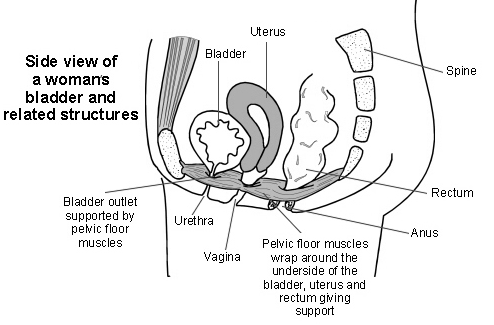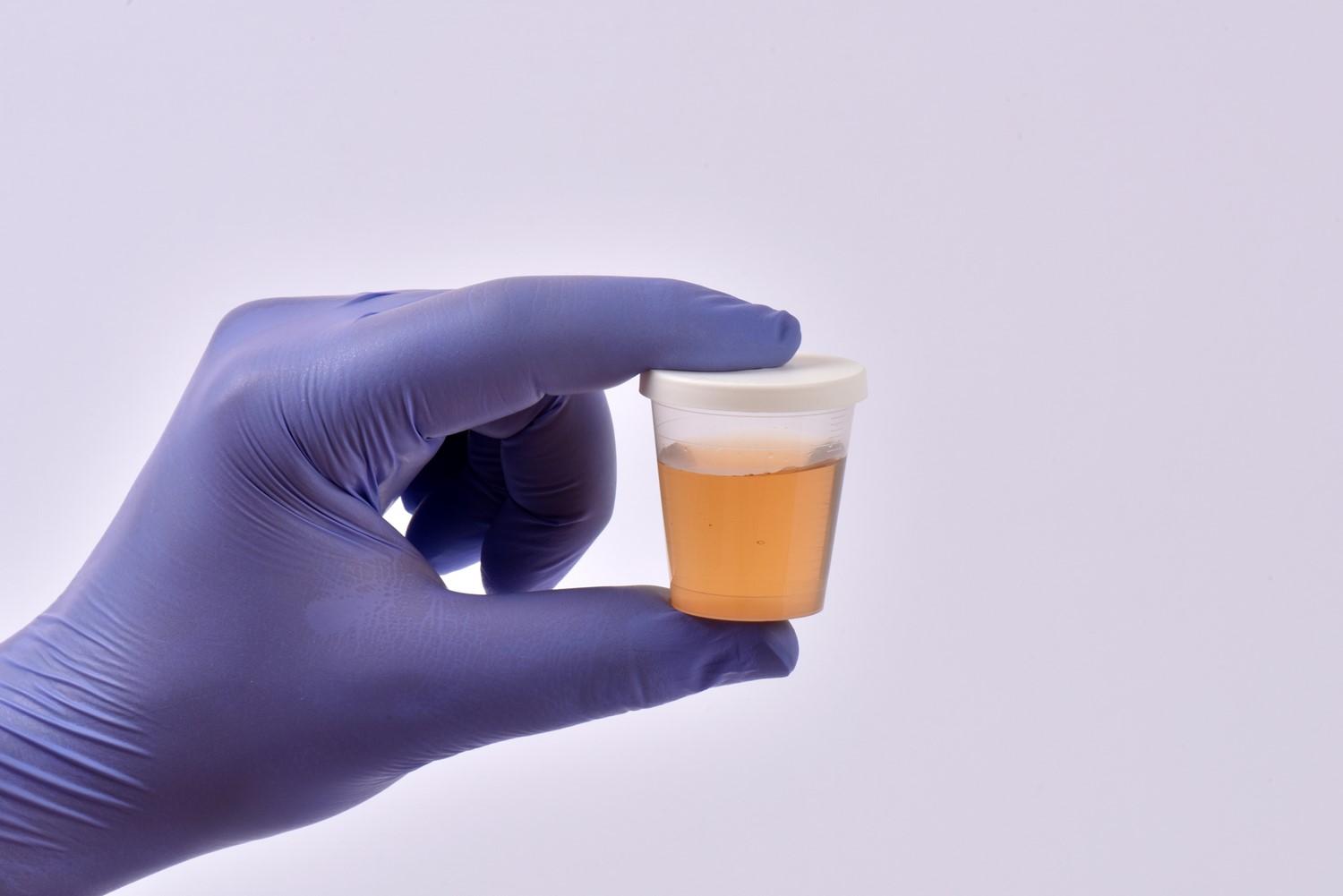Urinary incontinence
Peer reviewed by Dr Philippa Vincent, MRCGPLast updated by Dr Rachel Hudson, MRCGPLast updated 16 Nov 2023
Meets Patient’s editorial guidelines
- DownloadDownload
- Share
- Language
- Discussion
Urinary incontinence is a common problem, affecting women more commonly than men. Stress incontinence and urge incontinence are the most common types of incontinence.
Many people are embarrassed by the problem but, importantly, incontinence is often treatable so you should see your GP for help.
This leaflet provides a general overview of urinary incontinence. It may help you to understand the bladder and why incontinence occurs.
In this article:
Continue reading below
What is urinary incontinence?
If you have urinary incontinence it means that you pass urine when you do not mean to (involuntarily leaking urine). It can range from a small dribble now and then, to large floods of urine. Incontinence may cause you distress as well as being a hygiene problem.
Understanding urine and the bladder
The kidneys make urine continuously. A trickle of urine is constantly passing to the bladder down the tubes (ureters) from the kidneys to the bladder. You make different amounts of urine depending on how much you drink, eat and sweat.
Urinary tract

The bladder is made of muscle and stores the urine. It expands like a balloon as it fills with urine. The outlet for urine (the urethra) is normally kept closed. This is helped by the muscles below the bladder that surround and support the urethra (the pelvic floor muscles).
When a certain volume of urine is in the bladder, you become aware that the bladder is getting full. When you go to the toilet to pass urine, the bladder muscle squeezes (contracts) and the urethra and pelvic floor muscles relax to allow the urine to flow out.
Complex nerve messages are sent between the brain, the bladder and the pelvic floor muscles. These tell you how full your bladder is and tell the correct muscles to contract or relax at the right time.
Continue reading below
How common is urinary incontinence?
Urinary incontinence is common, especially in women. It can occur at any age but it is more likely to develop as you get older. It is estimated that about three million people in the UK are regularly incontinent. Overall, this is about 4 in 100 adults. However, as many as 1 in 5 women over the age of 40 have some degree of urinary incontinence.
It is likely that the true number of people affected is much higher. Many people do not tell their doctor about their incontinence, due to embarrassment. Some people wrongly think that incontinence is a normal part of ageing or that it cannot be treated. This is unfortunate, as many cases can be successfully treated or significantly improved.
What are the causes of urinary incontinence?
Female urinary system

There are several different types of urinary incontinence:
Stress incontinence
This is the most common type of urinary incontinence. It occurs when the pressure in the bladder becomes too great for the bladder outlet to withstand. This is usually caused by weak pelvic floor muscles.
Urine tends to leak most when you cough, laugh, sneeze or exercise (such as when you jump or run). In these situations there is a sudden extra pressure (stress) inside the tummy (abdomen) and on the bladder.
Small amounts of urine often leak. Sometimes much larger volumes of urine are accidentally passed. Stress incontinence may also be a side effect of pregnancy, as pelvic floor muscles are often weakened by childbirth.
Stress incontinence is more common in women who have had several children, in obese people and with increasing age. See the separate leaflet called Stress Incontinence for more details.
Stress incontinence can occur in men who have had some treatments for prostate cancer. This includes surgical removal of the prostate (prostatectomy), and radiotherapy.
Urge incontinence (unstable or overactive bladder)
This is the second most common cause of urinary incontinence. You have an strong urge to urinate. Sometimes urine leaks before you have time to get to the toilet. The bladder muscle contracts too early and the normal control is reduced.
In most cases, the cause of urge incontinence is not known. This is called idiopathic urge incontinence. It seems that the bladder muscle gives wrong messages to the brain and the bladder may feel fuller than it actually is.
Sometimes urge incontinence can occur because of problems with the nervous system (the brain, spinal cord and other nerves in the body). See the separate leaflet called Urge Incontinence for more details.
Diseases or medical conditions affecting the nervous system are called neurological disorders. Some people with certain neurological disorders may experience urge incontinence. Examples are Parkinson's disease, multiple sclerosis (MS), spinal cord injury and after a stroke.
Mixed incontinence
Some people have a combination of stress and urge incontinence.
Most cases of urinary incontinence are due to the above causes. The other causes listed below are less common.
Overflow incontinence
This occurs when there is an obstruction to the outflow of urine. The obstruction prevents the normal emptying of the bladder. A pool of urine constantly remains in the bladder that cannot empty properly. This is called chronic urinary retention.
Consequently, pressure on the bladder builds up behind the obstruction. The normal bladder emptying mechanism becomes faulty and urine may leak past the blockage from time to time. Treatment depends on the cause.
Enlarged prostate urinary incontinence
An enlarged prostate gland in men is a common cause of overflow incontinence. It may be treated by surgical removal of the prostate (prostatectomy) or with medicines to shrink the prostate gland.
Bedwetting (nocturnal enuresis)
Many children - but also some adults - are affected by bedwetting.
Functional incontinence
This is the name given to urinary incontinence where there is nothing obviously wrong with the nervous system controlling the bladder and urethra, or the lower urinary tract (bladder/urethra) itself. An example would be incontinence because you were unable to reach the toilet to empty your bladder, due to poor mobility.
Other types of incontinence
These include incontinence of urine when there is a birth defect (congenital abnormality) of the urinary tract, and problems that can occur after injury, accident or during operations.
Can constipation cause urinary incontinence?
Severe long-term (chronic) constipation can stop the bladder emptying properly and cause overflow urinary incontinence (as well as stool (faecal) incontinence). Dehydration can also cause constipation.
For these reasons, try to maintain a healthy balanced diet that contains plenty of fruit, vegetables and soluble fibre. See the separate leaflets called Fibre and Fibre Supplements, Constipation in Adults and Healthy Eating for more details.
Continue reading below
Testing for urinary incontinence
Urinary incontinence can often be improved and can be cured in many cases. Urinary incontinence treatment may depend on the type and cause.
Assessment
It is important to know which type of incontinence you have. Tell your doctor if you leak urine on a regular basis. He or she will be able to assess your symptoms, examine you and may do some simple tests to try to clarify the cause. You may also be asked to keep a diary for at least three days to assess:
How often you go to the toilet.
How much urine you pass each time.
How often you leak urine.
Sometimes a referral to a specialist is needed to clarify the type of incontinence. The sort of tests that may be done by your GP or specialist to clarify the cause include the following:
Urinalysis
This is a simple dipstick test to check for infection, sugar (glucose), blood or protein in urine. A urinary tract infection (UTI) can cause incontinence, particularly in older people. Diabetes causes sugar in the urine and may cause increased thirst and a strong urge to urinate.
Diabetes also puts you at more risk of UTIs. Diseases of the kidney may cause blood or protein in the urine. Visible blood in the urine can be a sign of serious bladder problems or a UTI.
Residual urine
This test finds out if any urine is left in your bladder and how much urine is left, after you have gone to the toilet. The amount of urine is usually measured using an ultrasound scan which can look at your bladder and measure the amount of urine in it.
Sometimes, another method is used: a doctor or nurse may pass a thin flexible tube called a catheter into the bladder via the urine outlet (urethra). Urine then drains out to be measured.
Vaginal and anal examination
A doctor or nurse may insert a gloved finger into the vagina and back passage (rectum). This can assess the strength and tone of the pelvic floor and sphincter muscles. For men, the rectal examination can also assess the size of the prostate gland.
For women, the doctor or nurse may also look for signs of pelvic organ bulging (prolapse) during the vaginal examination. They may use an instrument called a speculum to help them with this. See the separate leaflet called Genitourinary Prolapse for more details.
Urodynamics
These are tests of urine flow that are sometimes done in a hospital unit if the cause of the problem is not clear. Urodynamics may also be carried out where surgery is considered to treat the problem (see below).
Urinary incontinence treatment
Treatment depends on the type of incontinence. For example: pelvic floor exercises (also known as Kegel exercises) may cure or improve stress incontinence; bladder training may help urge incontinence; medications are sometimes used to help stop urge and stress incontinence. Occasionally an operation is performed to treat the underlying cause of incontinence, eg, to repair a vaginal prolapse, or for an enlarged prostate. Other types of incontinence are less common and treatments vary, depending on the cause. See the separate leaflets called Stress Incontinence, Urge Incontinence and Overactive Bladder Syndrome (OAB) for more details.
Lifestyle changes may also significantly help some types of incontinence. These can include:
Changing how much you drink
If you drink large volumes, it follows that you will pass more urine. If you have incontinence, you should not restrict your fluid intake too much, as you risk having a lack of body fluid (dehydration).
Restricting fluids can also irritate the bladder and so make urge incontinence worse. However, if you drink excessively, moderation may improve your symptoms. Drinking 6-8 glasses of water per day is recommended by the NHS. However, there is no scientific evidence we should drink that much.
In practical terms, it is best to drink when we need to, to quench our thirst. Remember that about one fifth of the water we take every day is hidden in food and that other drinks contain water.
Changing what you drink
Drinks containing caffeine (for example, tea, coffee, hot chocolate and cola) make urge incontinence worse. This is because caffeine is a natural diuretic. Diuretics are chemicals that make you need to pass urine. If you drink a lot of caffeine-containing fluids then consider switching to decaffeinated alternatives.
Changing when you drink
You should try to maintain a normal life as much as possible with regard to drinking and visiting the toilet. However, drinking late at night may mean your sleep is disturbed by the desire to get up and go to the toilet.
Weight loss
It has been shown that losing a modest amount of weight can improve urinary incontinence in overweight and obese women. Even just 5-10% weight loss can help symptoms. If you are overweight and incontinent then you should first try to lose weight in conjunction with any other treatments.
Toilet habits
This is also dealt with in bladder training but in general it is best to visit the toilet only when you need to, rather than 'just in case'. Depending on how much (and what) you are drinking and your level of physical activity (how much you are sweating), it is normal to pass urine every 3-4 hours on average.
Referral to a specialist
Your GP may advise on treatment or refer you to a continence advisor for advice on bladder training and pelvic floor exercises. Sometimes physiotherapists can help with pelvic floor exercises.
In some situations, you and your doctor may decide to wait and see how things go before trying treatment. This is because some mild cases get better on their own over time and without treatment. Sometimes a specialist (usually a urologist or a urogynaecologist if you are a woman) needs to be involved in more difficult cases.
Surgery
This can be used to treat incontinence, especially stress incontinence.
Living with urinary incontinence
If your incontinence persists and is not helped by treatment, your local continence advisor can give practical advice on how to manage. They may be able to supply incontinence pants, pads and other products. These days there are many different aids, gadgets and appliances that can greatly help when living with incontinence.
Patient picks for Bladder problems

Kidney and urinary tract
Urinary retention
Urinary retention means that you are having problems emptying the bladder completely. It may occur suddenly (acute urinary retention) or it may develop over a longer period of time (chronic urinary retention). Acute urinary retention is a medical emergency. Urinary retention is more common in men than in women. It becomes more common as you become older. In men aged in their 70s, urinary retention occurs in about 1 in every 100 men. For men in their 80s, urinary retention occurs in about 3 in every 100 men. You may need tests to help find the cause of your urinary retention. The treatment and outcome for both acute and chronic urinary retention will depend on the underlying cause. You should see a doctor immediately if you are unable to pass any urine when your bladder feels full and painful.
by Dr Rosalyn Adleman, MRCGP

Kidney and urinary tract
Overactive bladder syndrome
Overactive bladder syndrome is very common. Symptoms of overactive bladder include an urgent feeling that you need to go to the toilet, needing to pass urine frequently and sometimes leaking urine before you can get to the toilet. Treatment with bladder training often cures the problem. Sometimes medication may be advised in addition to bladder training to relax the bladder.
by Dr Hayley Willacy, FRCGP
Further reading and references
- Thirugnanasothy S; Managing urinary incontinence in older people. BMJ. 2010 Aug 9;341:c3835. doi: 10.1136/bmj.c3835.
- Wing RR, Creasman JM, West DS, et al; Improving urinary incontinence in overweight and obese women through modest weight loss. Obstet Gynecol. 2010 Aug;116(2 Pt 1):284-92.
- Urinary incontinence in neurological disease: assessment and management; NICE Clinical Guideline (August 2012 - last updated October 2023)
- Urinary incontinence and pelvic organ prolapse in women: management; NICE guideline (April 2019 - updated June 2019)
- Incontinence - urinary, in women; NICE CKS, July 2024 (UK access only)
- Guidelines on Non-neurogenic Female LUTS; European Association of Urology (updated March 2022)
- Guidelines on Urinary Incontinence in Adults; European Association of Urology (2020)
Continue reading below
Article history
The information on this page is written and peer reviewed by qualified clinicians.
Next review due: 14 Nov 2028
16 Nov 2023 | Latest version

Ask, share, connect.
Browse discussions, ask questions, and share experiences across hundreds of health topics.

Feeling unwell?
Assess your symptoms online for free
Sign up to the Patient newsletter
Your weekly dose of clear, trustworthy health advice - written to help you feel informed, confident and in control.
By subscribing you accept our Privacy Policy. You can unsubscribe at any time. We never sell your data.